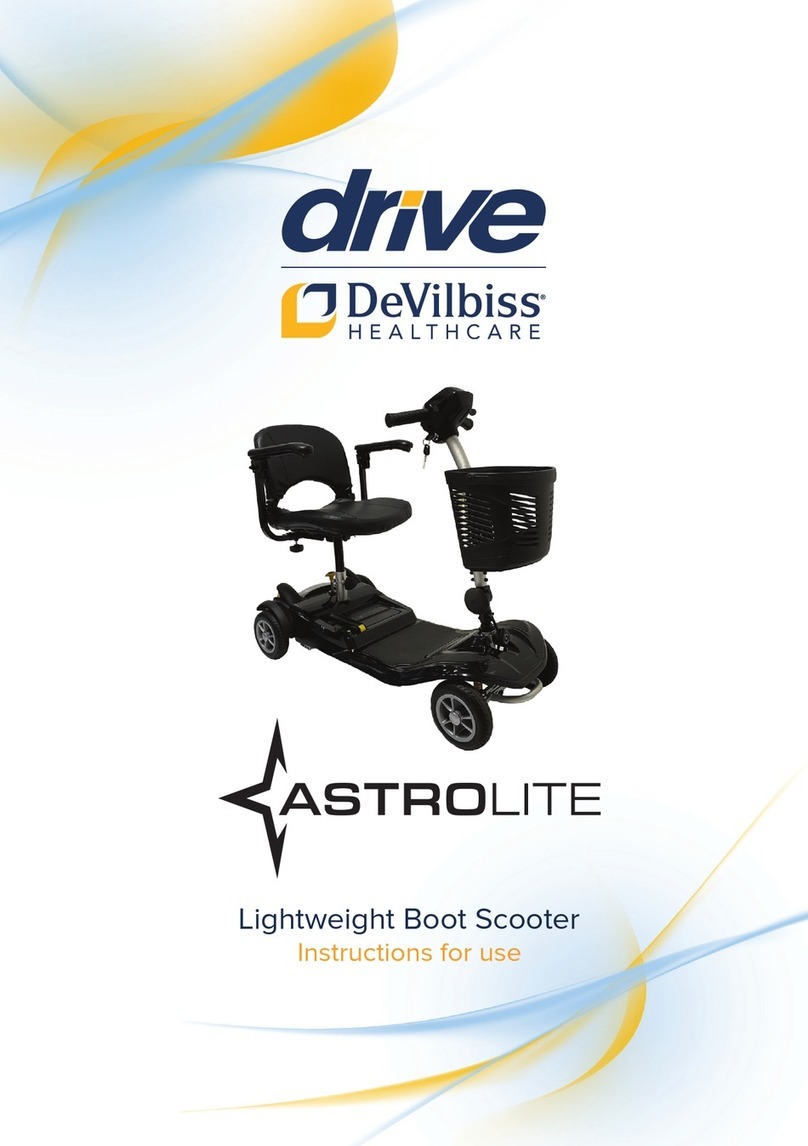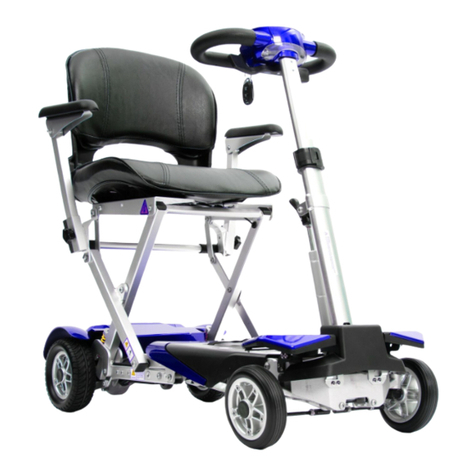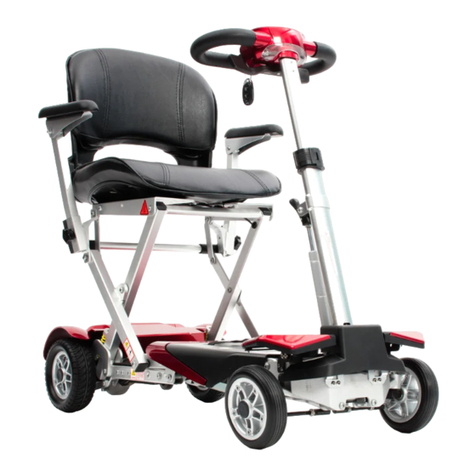
Boot Scooter Owner’s Manual
9
BRAKES & STOPPING
Coming to a stop in your scooter can simply be done by releasing the throle. The
throle will automacally return to the centre posion, and the scooter will come to a
stop.
ATTENTION – Quickly moving the throle in the opposite direcon of
travel will cause the scooter to come to an abrupt stop, and if held
connuously in the opposite direcon may cause errac movements if
you are unfamiliar with the controls.
Your scooter is equipped with two types of brake systems:
Á Regenerave brakes – when the throle is returned to the centre posion, or
stop neutral posion, regenerave brakes use electricity to quickly decelerate
the vehicle.
Á Park brakes – once the scooter comes to a complete stop the park brake
acvates automacally locking the drive wheels.
OUTDOOR OPERATION & INCLEMENT WEATHER PRECAUTIONS
While your scooter is purposed for in-home use to assist you in daily living acvies;
Drive DeVilbiss understands there are mes you need to operate the scooter
outdoors, and has designed it to perform superbly on level outdoor surfaces.
ATTENTION – When operang outdoors avoid uneven terrain, so
surfaces, tall grass, loose gravel, loose sand, fresh water, salt water, edges
of streams, lakes or oceans. If you are unsure about a surface, avoid it.
Exposure to inclement weather should always be avoided. If you find yourself caught
in inclement weather while operang your scooter, proceed to the closest shelter
immediately. Completely dry your scooter before operang, charging, or storing.
III. SAFETY GUIDELINES































